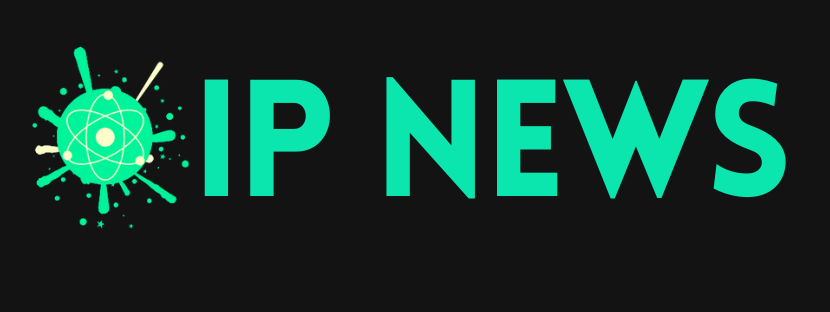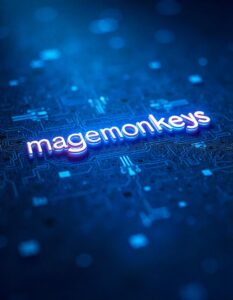Automating the Employee Lifecycle: A Consultant’s Take on HR Efficiency Gains
HR is no longer a back-office function. Today, it’s a strategic driver of productivity, experience, and retention. But many HR...

HR is no longer a back-office function. Today, it’s a strategic driver of productivity, experience, and retention. But many HR departments are still buried under repetitive tasks: chasing approvals, processing paperwork, managing compliance workflows, and manually reconciling data across systems. This is where automation comes in—not as a replacement for HR professionals, but as a force multiplier. Automating the employee lifecycle can deliver significant efficiency gains—but only when done strategically. In this article, we’ll explore how consulting-led automation improves HR outcomes across the entire employee journey—from hire to retire—and why organizations need expert guidance to make it work.
The Employee Lifecycle Is a Complex Machine. The lifecycle isn’t just a straight line—it’s a web of interconnected processes, each with multiple actors, documents, and systems. It includes recruitment, onboarding, learning and development, performance management, compensation and benefits, internal mobility, offboarding, and alumni engagement. Each of these touchpoints represents opportunities for automation—but also risks if done haphazardly. HR automation isn’t just about adding bots or forms. It’s about orchestrating a seamless flow of data, tasks, and decisions across the organization. And that’s where consultants add value: by designing automation that fits your structure, your tools, and your people.
Where Automation Delivers the Most Value in the Lifecycle. Let’s walk through each lifecycle stage and see how consultants apply automation for tangible efficiency gains.
Recruitment. What automation does: parses resumes, auto-screens candidates, sends pre-interview assessments, triggers reminders for interview panels, and schedules interviews through AI assistants. Consultant’s role: aligns automation with your hiring philosophy, eliminates bias in screening models, configures automation to match local compliance needs, and integrates with ATS, background checks, and internal systems. Outcome: reduced time-to-hire, better candidate experience, higher recruiter productivity.
Onboarding. What automation does: generates offer letters, kicks off IT provisioning, assigns onboarding tasks to stakeholders, tracks form completion, and personalizes welcome experiences. Consultant’s role: maps onboarding journeys per role/location, ensures integrations between HRIS, payroll, IT, and facilities, automates compliance and training assignments, and creates dashboards for HR to monitor status. Outcome: onboarding time reduced by 50–70%, fewer admin errors, better Day 1 experience.
Learning and Development. What automation does: recommends training based on role, behavior, or performance reviews, assigns learning paths, nudges users to complete modules, and sends certifications to managers. Consultant’s role: defines learner personas and development paths, aligns content automation with business skills and career planning, integrates learning tools with performance systems and LMS platforms. Outcome: faster skill ramp-up, improved learning compliance, measurable skill growth.
Performance Management. What automation does: triggers feedback cycles, reminds managers of reviews, collects 360-degree input, tracks goal progress, and surfaces insights for calibration meetings. Consultant’s role: redesigns the review process to be continuous and simple, aligns automation with OKR or competency models, configures workflows per team or region, and ensures fairness and transparency. Outcome: improved review completion rates, better goal alignment, increased manager participation.
Compensation and Benefits. What automation does: runs compensation models, manages approval chains, notifies employees of plan changes, integrates with finance systems, and ensures tax compliance. Consultant’s role: defines eligibility and workflow rules for automation, aligns compensation processes to talent outcomes, integrates benefits platforms with core HR systems. Outcome: shorter compensation planning cycles, lower risk of errors, increased HR bandwidth during peak cycles.
Internal Mobility and Career Paths. What automation does: flags internal roles based on employee skills and interests, sends alerts to eligible employees, automates application workflows, and tracks outcomes. Consultant’s role: connects skills data with job architecture, integrates automation with learning and career pathing tools, and promotes a culture of mobility through targeted nudges. Outcome: reduced external hiring costs, increased employee retention, better engagement through career transparency.
Offboarding and Alumni Engagement. What automation does: triggers exit surveys and compliance checklists, deactivates system access, processes final settlements, sends alumni newsletters and rehiring opportunities. Consultant’s role: ensures legal compliance and document automation, designs graceful exit experiences, connects offboarding data with HR analytics. Outcome: smoother transitions, better compliance, increased boomerang rehires, brand advocacy even after exit.
Why Automation Without Consulting Often Fails. Many companies rush into automation by purchasing HR software with built-in workflows. But without consulting insight, these automations often mirror broken manual processes. Common automation failures include duplicated notifications or approvals, workflows that don’t adapt to role or region, lack of integration between systems, user confusion due to poor UX, and automating inefficiency instead of redesigning it. Consultants fix this by rethinking—not just digitizing—HR processes. They apply lean principles, design for user experience, and build flexibility into workflows to handle exceptions, variations, and changes.
Consultants Don’t Just Add Automation—They Engineer Simplicity. A consultant’s first job is to ask “why.” Why is this step necessary? Why do you need five approvals for a travel request? Why does onboarding take two weeks? Through these questions, they uncover friction points, redundant steps, and legacy thinking. Then they reconstruct the process—sometimes removing entire layers—before applying automation. The result isn’t just faster HR. It’s smarter HR.
Real-World Case: A Healthcare Company’s Lifecycle Overhaul. A healthcare provider with 12,000+ employees was struggling with onboarding delays, inconsistent reviews, and paper-based exit processes. They had licensed top-tier HR software but failed to achieve impact. Consultants audited their lifecycle and discovered that automation existed—but wasn’t connected. Onboarding tasks were being sent before background checks cleared. Review cycles overlapped with training deadlines. Exit surveys weren’t being analyzed. The consulting team redesigned workflows, set event-driven automation triggers, and built role-based dashboards. Result: onboarding time dropped from 14 days to 5. Review completion rose from 40% to 91%. Exit survey insights were linked to attrition reduction strategies. Same tools. Better design. Real efficiency.
Measuring the ROI of Lifecycle Automation. When done right, automation delivers measurable improvements: 40–60% reduction in manual HR hours per employee per year, 30–50% faster onboarding and offboarding timelines, 2–4x improvement in cycle completion for reviews, training, or compliance tasks, improved employee satisfaction scores due to transparency and faster service. But to get these results, you need clarity on what you’re measuring. Consultants help define and track success metrics like cycle time, accuracy rate, compliance completion, and adoption per workflow.
The Future of HR Automation Is Adaptive. The next frontier isn’t just static workflows—it’s intelligent automation. Think bots that learn from behavior patterns, workflows that adapt based on performance or engagement signals, systems that route tasks dynamically based on availability or business rules. Consultants help build this adaptive layer by aligning AI and ML capabilities with organizational structure and policies. They also ensure AI ethics, transparency, and compliance are not compromised in the name of speed.
Automation Is a Cultural Shift, Not Just a Tech Project. When consultants lead automation, they don’t just configure tools—they drive change. They prepare HR teams for role evolution (from admins to analysts), create communications that explain what’s changing and why, train managers and employees to use the tools efficiently, and build champions across functions to sustain momentum. This change layer ensures automation doesn’t just go live—it gets used, understood, and appreciated.
Conclusion: Automate What Matters, Humanize What Counts. Automating the employee lifecycle isn’t about replacing HR teams—it’s about freeing them to do more strategic, high-value work. But automation is only effective when it’s intelligent, contextual, and employee-centric. That’s what consulting brings to the table. With HR technology consulting, organizations avoid automation for automation’s sake—and instead unlock efficiency, consistency, and experience gains that last. Because when automation is designed with empathy and expertise, it doesn’t just make HR faster. It makes it better.





